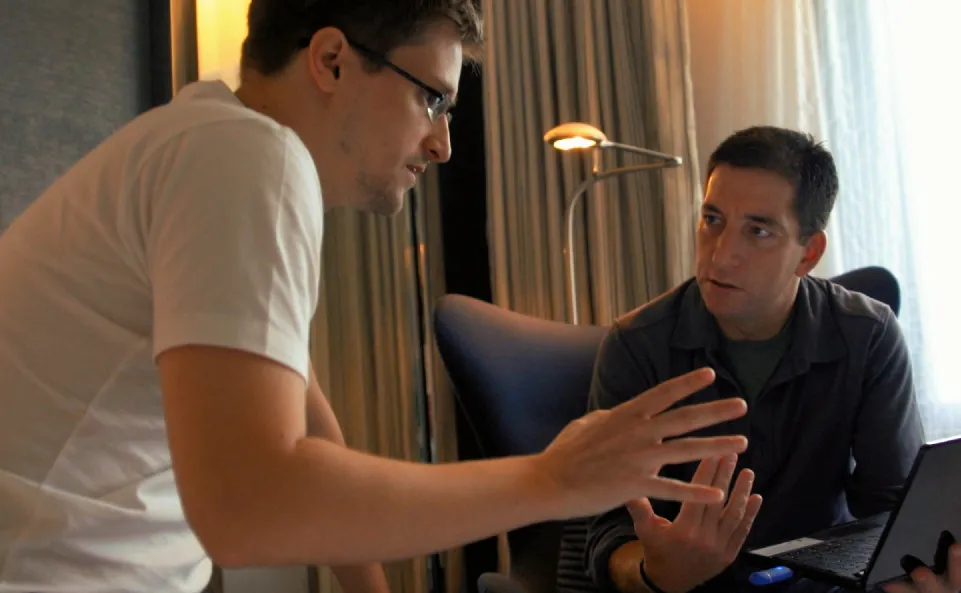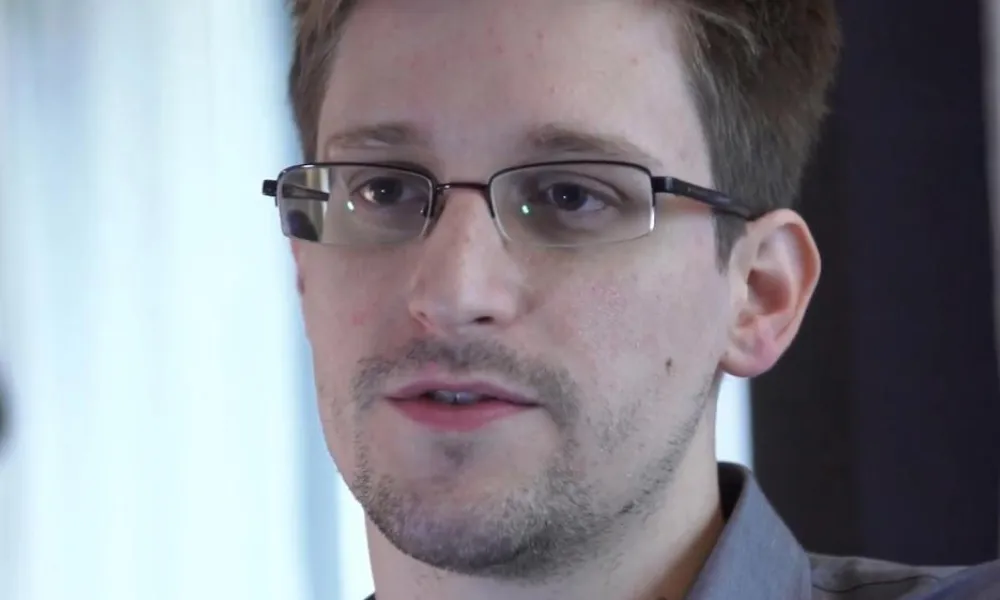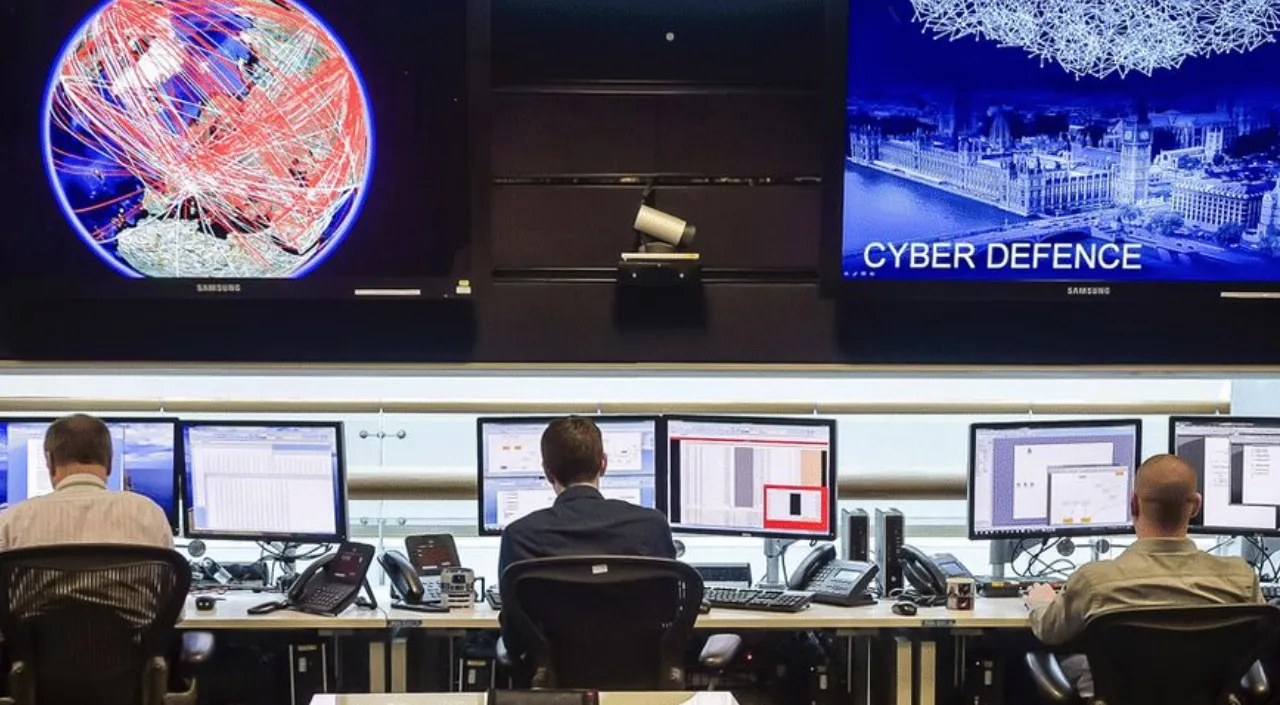15 Top NSA Spy Secrets Revealed by Edward Snowden
In June 2013, the 29-year-old source behind the biggest intelligence leak in the NSA’s history shocked the world by revealing top-secret NSA and GCHQ cyber programs. Edward Snowden stole hundreds of thousands of highly classified secrets and handed them to journalists while holed up in a Hong Kong hotel room.
In the weeks before Edward Snowden disappeared in June 2013, he made the preparations of a man about to die. Snowden emptied his bank account and filled an old steel ammo box with cash for his girlfriend Lindsay to find later. He erased and encrypted old computers, and he even went on a DIY bender fixing household doors and changing light bulbs.
“Everything was imbued with this sense of an ending, and yet there were moments when it seemed that no end was in sight,” Snowden recalled in his memoir Permanent Record (2019). Snowden took emergency leave from his job at NSA contractor Booz Allen Hamilton citing ‘epilepsy’ and tried to figure out where to go. The Five Eyes countries were out. So was Europe as Snowden didn’t imagine countries would uphold international law against extradition of those charged with political crimes. In fact, an Irish High Court refused to issue an arrest warrant for Snowden’s extradition but the whistleblower wasn’t in the Emerald Isle.
Snowden had paid cash for an airline ticket from Hawaii to Tokyo and Hong Kong where he barricaded himself in the Mira Hotel’s Room 1014 and handed over tens of thousands of top-secret documents to journalists. Two weeks later, Snowden was a household name. “I was marked,” Snowden writes. “There was a target on my back.”
He fled again on a wild run to Moscow where he planned to lay over before flying on to Havana, Caracas, and his final destination Ecuador. Instead, the US State Department canceled his passport midair and Snowden found himself living in the Sheremetyevo International Airport lounge for a biblical 40 days and 40 nights surviving on Burger King Whoppers.
Along the way, Snowden met an FSB spymaster in an airport boardroom who gave a cold pitch to come work for the Federal Security Service, the main successor to the KGB. Snowden said he declined. Before leaving Hong Kong, Snowden wiped his four laptops clean and destroyed the cryptographic key so he could no longer access his stolen NSA and GCHQ documents even if compelled.

Snowden’s 10-year layover
Snowden thought he’d be in Moscow for 20 hours. A decade later, he still hasn’t left. Russia eventually granted him temporary asylum, then permanent citizenship. He now lives in Moscow with his wife, Lindsay, and their son. When he leaves their apartment, it is in disguise - he’ll shave his beard, change his glasses, burrow under a hat or into a scarf wrapped around his neck. Snowden looks away from traffic while crossing Moscow’s streets to avoid being caught on car dash cams and keeps his head down around CCTV. If he takes a cab, it drops him off several blocks away from his intended location.
It is a far cry from his days at the NSA where Snowden worked in a subterranean Pearl Harbor-era former airplane factory in Hawaii, staring at a computer terminal with practically unlimited access to the communications of nearly every man, woman and child on Earth who’d ever dialed a phone or touched a computer. “Among those people were 320 million of my fellow American citizens.”
In 2015, the US Senate passed a bill to end the bulk collection of millions of Americans’ phone records, the most significant surveillance reform since 1978. The EU Court of Justice declared that an international commercial data-sharing agreement allowing US companies free-flowing access to large amounts of European citizens’ data was no longer valid. Seven years after Snowden blew the whistle on the mass surveillance of US telephone records, an Appeals Court ruled the program was unlawful and that the US intelligence leaders who publicly defended it were not telling the truth.
None of those rulings have cleared the way for Snowden to return to the US where he faces three Espionage Act charges and 30 years in prison. He told the Guardian in 2023 that he had no regrets: “We trusted the government not to screw us. But they did. We trusted the tech companies not to take advantage of us. But they did. That is going to happen again because that is the nature of power.”
Here are 15 of Snowden's top reveals from 2013.

1. Prism
The Prism program that allowed the NSA to access emails, documents, photos, and data stored by tech companies including Facebook, Google, Microsoft, Yahoo, Skype, YouTube, Dropbox, and Apple through secret agreements. Microsoft was reportedly PRISM’s first partner. In 2008, Congress gave the Justice Department authority to compel reluctant companies to comply with Prism or face court action. Snowden also revealed Prism-like programs in Canada (CSEC), New Zealand (GCSB), and elsewhere.
2. Tempora
The Tempora leak revealed that British cyber spy agency GCHQ tapped fiber-optic cables to collect, store, and share with the NSA vast quantities of the world’s email messages, Facebook posts, calls, and internet histories. "It's not just a US problem. The UK has a huge dog in this fight," Snowden told British newspaper The Guardian. "They [GCHQ] are worse than the US."
3. XKeyscore
XKeyscore has been described as ‘NSA’s Google’, allowing US spooks to access and analyze global internet data. “One of the NSA’s most powerful tools of mass surveillance makes tracking someone’s Internet usage as easy as entering an email address and provides no built-in technology to prevent abuse,” The Intercept reported. Internet traffic from fiber optic cables that make up the backbone of the world’s communication network flows continuously to XKeyscore.

4. Boundless Informant
The Boundless Informant program shows how the NSA visualizes and documents data collection. Essentially, it’s a data-mining tool. For example, if NSA officials ask: 'What type of coverage do we have on Country X?', they can access metadata that includes intel collected on the country’s computer and phone networks. By March 2013, the NSA had collected 97bn pieces of intel from global computer networks.
5. Follow the Money
The NSA reportedly tracks and collects global financial data, including credit card transactions, according to the German media outlet Spiegel, and that includes international payments processed by companies including Visa: “It has even set up its own financial database to track money flows through a ‘tailored access operations’ division’,” Spiegel reported. Snowden’s intel shows that the spying is conducted by a branch called Follow the Money (FTM) with information flowing into the NSA's financial data bank Tracfin, which in 2011 contained 180m records - mainly credit card transactions.
6. JTRIG
Snowden revealed that Britain’s GCHQ unit - the Joint Threat Research Intelligence Group (JTRIG) - is engaged in online manipulation, propaganda, and disinformation campaigns. According to the American Civil Liberties Union, some of the tools include the ability to manipulate the results of online polls (Underpass), artificially inflate page view counts on websites (Slipstream), amplify sanctioned messages on YouTube (Gestator), censor video content deemed to be ‘extremist’ (Silverlord), find private photographs of targets on Facebook (Spring Bishop), and spoof any email address and send an email under that identity (Changeling).
7. Nymrod
Everybody spies but the US and Britain are world-class at eavesdropping on allies and rivals. Snowden's leaks revealed that intelligence agencies targeted the communications of at least 11 world leaders but the figures obtained by Der Spiegel and The Intercept revealed that the actual fixture to be more than 100, straining diplomatic relations.

"The brand new social experience where you activate your gaming skills as you train like a spy."
- TimeOut
Take on thrilling, high-energy espionage challenges across different game zones.

8. Bullrun and Edgehill
The NSA worked diligently to undermine encryption standards, compromising the security of global communication systems under the Bullrun program. GCHQ has a similar program codenamed Edgehill. According to The Guardian and other media, Bullrun uses methods including computer network exploitation, interdiction, industry relationships, collaboration with other intelligence community entities, and advanced mathematical techniques.
.webp)
9. Muscular
A joint NSA-GCHQ project operating in 2013 hoovered up intelligence from Google and Yahoo data center links outside the US under the Muscular program. According to a top-secret report dated January 9, 2013, every single day the NSA’s “acquisitions directorate” sent millions of records from Yahoo and Google internal networks to data warehouses at NSA Fort Meade HQ. In the preceding 30 days, the report said, field collectors had processed and sent back 181.3m new records.
10. The Office of Tailored Access Operations (TAO)
TAO are basically government hackers. The cyber-warfare experts are (or were) arguably the most important component of the NSA's Signals Intelligence Directorate. TAO (aka Computer Network Operations) began operating in the 1990s. TAO identifies, monitors, infiltrates, and gathers intel on foreign computer systems. Back in 2013, TAO had more than 1,000 military and civilian computer hackers, analysts, targeters, software and hardware designers, and electrical engineers.

11. Mobile phone intercepts
The NSA doesn’t just target foreign spies, rogue operators, and ‘bad guys’. They Intercept the mobile phone comms of mobile phone employees Snowden's leaks revealed that intelligence agencies intercepted and collected mobile phone communications and emails sent by employees of mobile operators to find security weaknesses in networks that it could exploit for surveillance purposes.
12. GCHQ's Optic Nerve program
Snowden revealed that spooks collect Yahoo webcam images in bulk through the GCHQ Optic Nerve program. GCHQ - with help from the NSA - collects images of users who aren’t even suspected of wrongdoing. In a six-month period in 2008, the agency collected webcam imagery from more than 1.8m Yahoo user accounts globally, including sexually explicit communications.

13. Operation EgotisticalGiraffe
The NSA aimed to infiltrate and compromise popular social networking platforms under Operation EgotisticalGiraffe. EgotisticalGiraffe attacked Tor users through vulnerable software on their computers. (Tor is short for The Onion Router‘s free and open-source software for enabling anonymous communication.) The NSA and GCHQ made repeated attempts to identify people using the Tor anonymity service, but the fundamental security remained intact in 2013 according to top-secret documents.
14. Covert operations against China
Snowden also accused the US of hacking foreign mobile phone companies to access millions of private text messages in China. Text messaging was the most popular form of communication in mainland China in 2012 when more than 900bn SMS messages were exchanged. The Guardian quoted Snowden saying: "The NSA does all kinds of things like hack Chinese cell phone companies to steal all of your SMS data."
15. Dishfire
Dishfire involved the collection, storage, and analysis of hundreds of millions of global text messages (SMS) - both foreign and domestic - swept up in a way similar to how a fishing net collects fish. Stored messages can be searched using criteria such as phone numbers, keywords, content, and location data so spies can extract contacts, financial transactions, and travel plans. Critics argued that the program's broad and indiscriminate collection violates privacy rights. Proponents claim the program is necessary for counterterrorism efforts.
Intrigued? For those interested in privacy issues, the Oscar-winning Citizen Four is a must-watch documentary.
SPYSCAPE+

Join now to get True Spies episodes early and ad-free every week, plus subscriber-only Debriefs and Q&As to bring you closer to your favorite spies and stories from the show. You’ll also get our exclusive series The Razumov Files and The Great James Bond Car Robbery!


Gadgets & Gifts
Explore a world of secrets together. Navigate through interactive exhibits and missions to discover your spy roles.
Your Spy Skills
We all have valuable spy skills - your mission is to discover yours. See if you have what it takes to be a secret agent, with our authentic spy skills evaluation* developed by a former Head of Training at British Intelligence. It's FREE so share & compare with friends now!
* Find more information about the scientific methods behind the evaluation here.


Stay Connected
Follow us for the latest
TIKTOK
INSTAGRAM
X
FACEBOOK
YOUTUBE